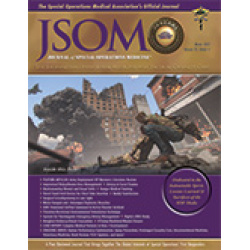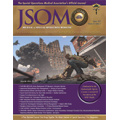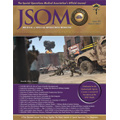Incidence of Airway Interventions in the Setting of Serious Facial Trauma
Schauer SG, Naylor JF, Fisher AD, Becker TE, April MD 22(4). 18 - 21 (Journal Article)
Background: Airway obstruction is the second leading cause of preventable death on the battlefield. Most airway obstruction occurs secondary to traumatic disruptions of the airway anatomical structures. Facial trauma is frequently cited as rationale for maintaining cricothyrotomy in the medics' skill set over the supraglottic airways more commonly used in the civilian setting. Methods: We used a series of emergency department procedure codes to identify patients within the Department of Defense Trauma Registry (DoDTR) from January 2007 to August 2016. This is a sub-group analysis of casualties with documented serious facial trauma based on an abbreviated injury scale of 3 or greater for the facial body region. Results: Our predefined search codes captured 28,222 DoDTR casualties, of which we identified 136 (0.5%) casualties with serious facial trauma, of which 19 of the 136 had documentation of an airway intervention (13.9%). No casualties with serious facial trauma underwent nasopharyngeal airway (NPA) placement, 0.04% underwent cricothyrotomy (n = 10), 0.03% underwent intubation (n = 9), and a single subject underwent supraglottic airway (SGA) placement (<0.01%). We only identified four casualties (0.01% of total dataset) with an isolated injury to the face. Conclusions: Serious injury to the face rarely occurred among trauma casualties within the DoDTR. In this subgroup analysis of casualties with serious facial trauma, the incidence of airway interventions to include cricothyrotomy was exceedingly low. However, within this small subset the mortality rate is high and thus better methods for airway management need to be developed.


 Español
Español 





